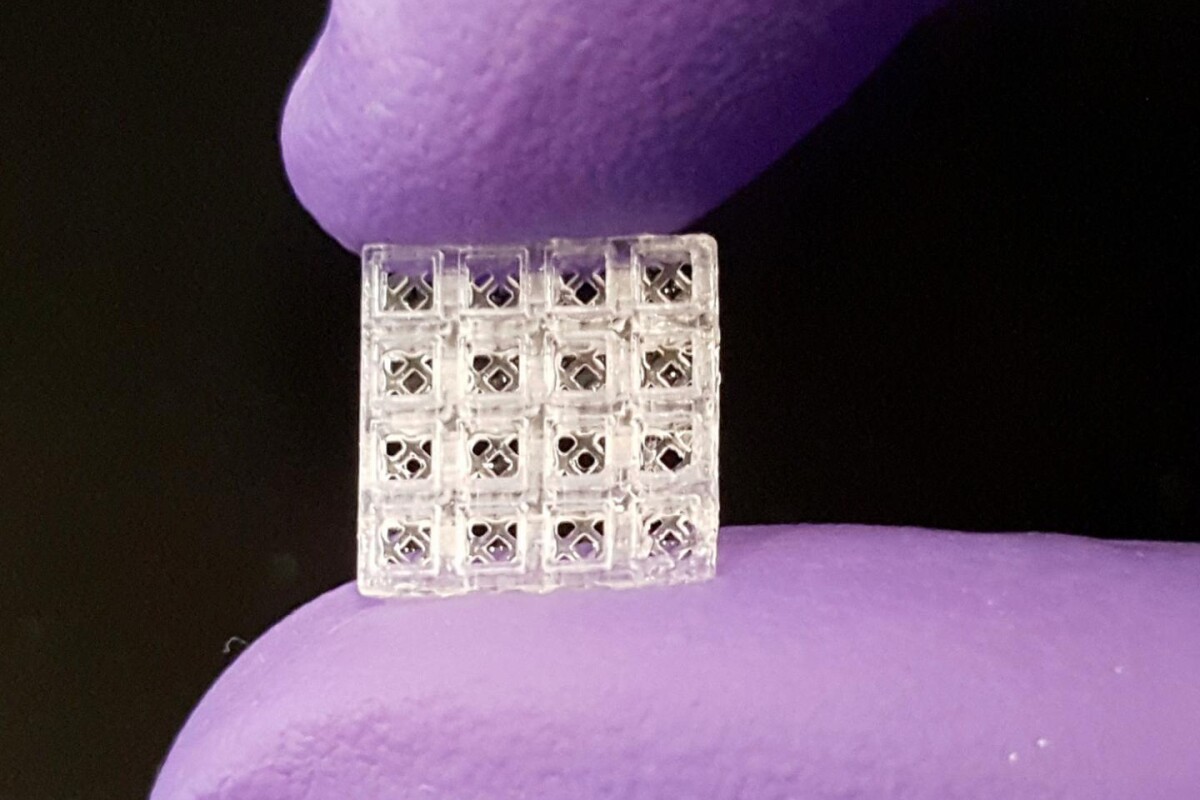More and more, we're hearing about scaffolding-like materials that are used to help heal bone injuries. A new one is claimed to be particularly versatile, as it's inspired by Lego building blocks.
Typically made of biocompatible polymers, so-called bioscaffolding is usually either 3D-printed in one solid piece, or injected in the form of a gel that sets into a solid.
In either case, once it's in place within a bone injury site, the adjacent bone cells migrate into the scaffolding, essentially "roosting" within its three-dimensional microstructure. Those cells then reproduce, gradually replacing the polymer as it harmlessly biodegrades. Eventually, all that's left is pure, natural bone.
Led by Assoc. Prof. Luiz Bertassoni, scientists at the Oregon Health & Science University, the University of Oregon, New York University and Thailand's Mahidol University have taken a different approach. They've created tiny hollow 3D-printed polymer blocks (aka micro cages), that can be stacked together like Lego in order to build bioscaffolding implants of the desired shapes and sizes.
Making the implants in this fashion is considerably faster and simpler than 3D printing them in a single custom-size piece. Additionally, unlike the case with gel-based bioscaffolding, different blocks can be filled with different types of growth factors. This means that an implant could have one type of growth factor in the blocks around its outside, for instance, and another in the blocks on the inside, in order to more accurately recreate the structure of natural bone.
"The 3D-printed micro cages can be filled with ingredients precisely where you want them to go, and then stacked like Lego blocks to result in the desired configuration and distribution of ingredients three dimensionally," Bertassoni tells us. "Consequently, this creates an instructive scaffold, where cells can be guided exactly to the location of interest. This is very important, since a huge bottleneck in the field is, for instance, to get blood vessels in the core of the regenerated tissue before more tissue can form."
In fact, in lab tests performed on rats with bone injuries, it was found that implants made from the blocks stimulated about three times more blood vessel growth than traditional bioscaffolding materials.
It is hoped that once developed further, the technology could also be used to regrow soft tissues at injury sites, and even to create complete organs for transplant.
A paper on the research was published this week in the journal Advanced Materials.
Source: Oregon Health & Science University via EurekAlert




